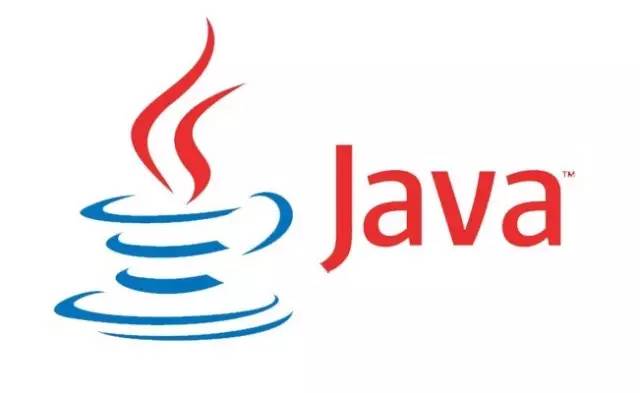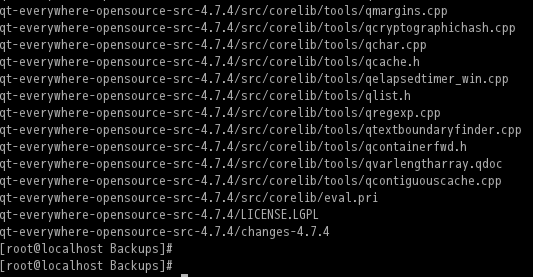Summarize the usage of compression and decompression examples in Java
This article mainly introduces the relevant information on the compression and decompression examples of org.apache.tools.zip in the java ant package. Friends in need can refer to the org.apache.tools.zip implementation in the java ant package. Detailed explanation of compression and decompression examples. In fact, there is a better class in the ant package in apache (please GOOGLE's ant.jar), which already supports Chinese. We will not repeat the wheel, just use it. The most important thing here The function is to realize the function of specifying multiple files to the same compressed package. An example of using org.apache.tools.zip to compress/decompress zip files is used to solve the problem of Chinese garbled characters. Example code: import Java.io.BufferedInputStream; import java.io.BufferedOutputStream; import java.io.File; import java.io.FileIn
1. Detailed explanation of compression and decompression examples in java ant package

Introduction: This article mainly introduces the relevant information on the detailed explanation of compression and decompression examples of org.apache.tools.zip in the java ant package. Friends in need can refer to the following
2. Code case for the application of Zip compression and decompression technology in HTML5 (picture)

Introduction: JSZip is a javaScript tool that can create, read, and modify .zip files. In web applications, it is inevitable to obtain resources from the web server. If all resources can be merged into a .zip file, then only one request is required, which not only reduces the pressure on the server, but also speeds up the web process. The application's rendering speed.

Introduction: Everyone knows that compressing files or folders can save a lot of disk space, so what are the compression and decompression commands for Linux systems? What are the parameters? The editor below will introduce to you the commands and parameters for tar compression and decompression of folders under Linux. I hope the content of this article will be helpful to you.
4. ZIP compression and decompression in .NET

##Introduction: Source: http://www.cnblogs.com/zhaozhan/archive/2012/05/28/2520701.html In .NET, zip compression and decompression can be achieved in various ways: 1 , using System.IO.Packaging; 2. Using third-party class libraries; 3. Implemented through new ZipArchive, ZipFile and other classes in the System.IO.Compression namespace. 1. Use Syste...
5. Linux common commands---tar | zip (decompression)

Introduction: Reducing file size has two obvious benefits. One is that it can reduce storage space, and the other is that when transferring files through the network, it can reduce the transmission time. gzip is a command commonly used in Linux systems to compress and decompress files. It is convenient and easy to use. Gzip can not only be used to compress large, rarely used files to save disk space, but can also be used together with the tar command to form a popular compressed file format in the Linux operating system. According to statistics, the gzip command has a compression rate of 60% to 70% for text files.
6. php uses the pclzip class to implement file compression. Attached is the pclzip class download address
Introduction:: How PHP uses the pclzip class to implement file compression. Attached is the pclzip class download address: The example in this article describes how PHP uses the pclzip class to implement file compression. Share it with everyone for your reference, the details are as follows: To use PclZIp (zip format) compression, you first need to download its package file (you can click here to download from this site). The function of PclZip is quite powerful. It can compress and decompress, as well as some methods of adding and deleting classes, etc. Of course, we can all find these contents online, so there is no need to remember them all. We just need to be able to quickly find the method of use online when we need to use it. First of all, what we need is
7. php code for compressing and decompressing strings
Introduction: php compression Code for decompressing strings
8. Usage examples of common file operation functions of shutil module in Python
Introduction : The shutil module provides more powerful local file operation functions than the OS module, including file compression and decompression. Below we will list usage examples of common file operation functions of the shutil module in Python:
9. Examples of using Python to read, write, compress and decompress files
Introduction: Python’s os module provides basic file reading and writing methods, and The zipfile module is for file compression and decompression operations. Here we take a look at an example of using Python to read, write, compress and decompress files:
10. php zlib compression and decompression Code for compressing swf files_PHP tutorial
Introduction: PHP zlib code for compressing and decompressing swf files. It's different when using PHP. PHP contains the zlib link library, and you can directly use its related functions. The following is an example of compressing and uncompressing a SWF file I wrote: //No judgment has been added to determine whether the SWF file has been processed
The above is the detailed content of Summarize the usage of compression and decompression examples in Java. For more information, please follow other related articles on the PHP Chinese website!

Hot AI Tools

Undresser.AI Undress
AI-powered app for creating realistic nude photos

AI Clothes Remover
Online AI tool for removing clothes from photos.

Undress AI Tool
Undress images for free

Clothoff.io
AI clothes remover

AI Hentai Generator
Generate AI Hentai for free.

Hot Article

Hot Tools

Notepad++7.3.1
Easy-to-use and free code editor

SublimeText3 Chinese version
Chinese version, very easy to use

Zend Studio 13.0.1
Powerful PHP integrated development environment

Dreamweaver CS6
Visual web development tools

SublimeText3 Mac version
God-level code editing software (SublimeText3)

Hot Topics
 Top 4 JavaScript Frameworks in 2025: React, Angular, Vue, Svelte
Mar 07, 2025 pm 06:09 PM
Top 4 JavaScript Frameworks in 2025: React, Angular, Vue, Svelte
Mar 07, 2025 pm 06:09 PM
This article analyzes the top four JavaScript frameworks (React, Angular, Vue, Svelte) in 2025, comparing their performance, scalability, and future prospects. While all remain dominant due to strong communities and ecosystems, their relative popul
 How do I implement multi-level caching in Java applications using libraries like Caffeine or Guava Cache?
Mar 17, 2025 pm 05:44 PM
How do I implement multi-level caching in Java applications using libraries like Caffeine or Guava Cache?
Mar 17, 2025 pm 05:44 PM
The article discusses implementing multi-level caching in Java using Caffeine and Guava Cache to enhance application performance. It covers setup, integration, and performance benefits, along with configuration and eviction policy management best pra
 Node.js 20: Key Performance Boosts and New Features
Mar 07, 2025 pm 06:12 PM
Node.js 20: Key Performance Boosts and New Features
Mar 07, 2025 pm 06:12 PM
Node.js 20 significantly enhances performance via V8 engine improvements, notably faster garbage collection and I/O. New features include better WebAssembly support and refined debugging tools, boosting developer productivity and application speed.
 How does Java's classloading mechanism work, including different classloaders and their delegation models?
Mar 17, 2025 pm 05:35 PM
How does Java's classloading mechanism work, including different classloaders and their delegation models?
Mar 17, 2025 pm 05:35 PM
Java's classloading involves loading, linking, and initializing classes using a hierarchical system with Bootstrap, Extension, and Application classloaders. The parent delegation model ensures core classes are loaded first, affecting custom class loa
 Iceberg: The Future of Data Lake Tables
Mar 07, 2025 pm 06:31 PM
Iceberg: The Future of Data Lake Tables
Mar 07, 2025 pm 06:31 PM
Iceberg, an open table format for large analytical datasets, improves data lake performance and scalability. It addresses limitations of Parquet/ORC through internal metadata management, enabling efficient schema evolution, time travel, concurrent w
 Spring Boot SnakeYAML 2.0 CVE-2022-1471 Issue Fixed
Mar 07, 2025 pm 05:52 PM
Spring Boot SnakeYAML 2.0 CVE-2022-1471 Issue Fixed
Mar 07, 2025 pm 05:52 PM
This article addresses the CVE-2022-1471 vulnerability in SnakeYAML, a critical flaw allowing remote code execution. It details how upgrading Spring Boot applications to SnakeYAML 1.33 or later mitigates this risk, emphasizing that dependency updat
 How can I implement functional programming techniques in Java?
Mar 11, 2025 pm 05:51 PM
How can I implement functional programming techniques in Java?
Mar 11, 2025 pm 05:51 PM
This article explores integrating functional programming into Java using lambda expressions, Streams API, method references, and Optional. It highlights benefits like improved code readability and maintainability through conciseness and immutability
 How do I use Maven or Gradle for advanced Java project management, build automation, and dependency resolution?
Mar 17, 2025 pm 05:46 PM
How do I use Maven or Gradle for advanced Java project management, build automation, and dependency resolution?
Mar 17, 2025 pm 05:46 PM
The article discusses using Maven and Gradle for Java project management, build automation, and dependency resolution, comparing their approaches and optimization strategies.






